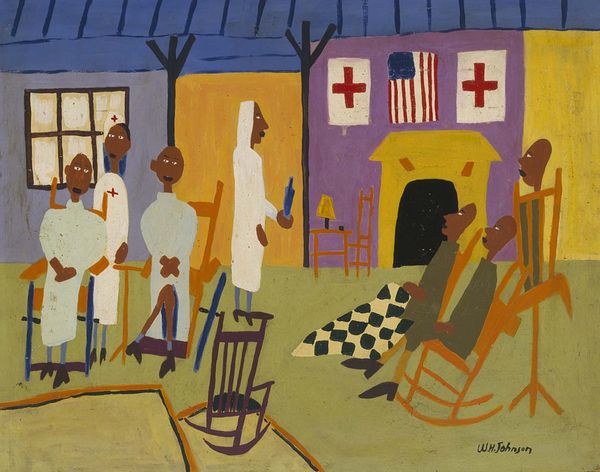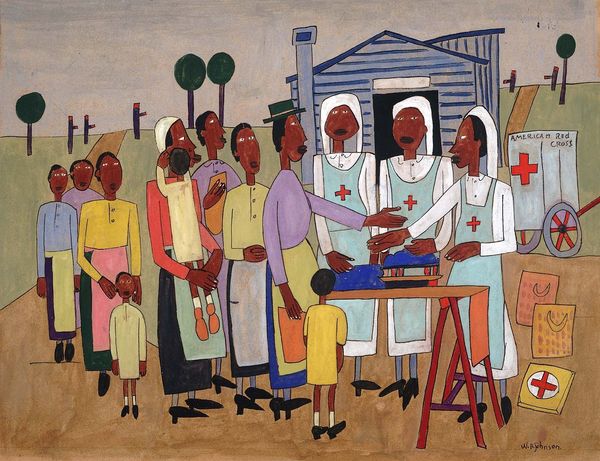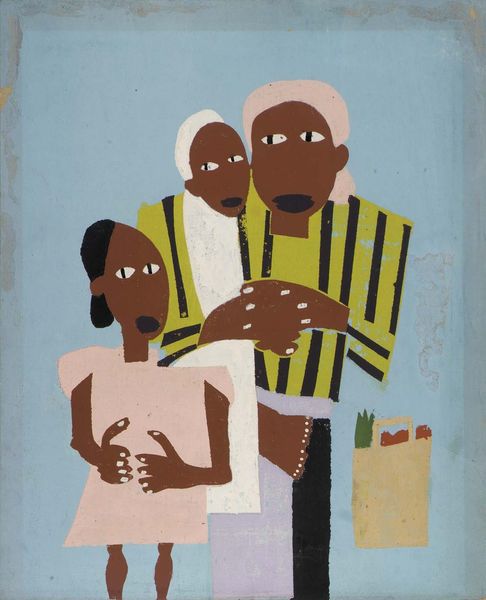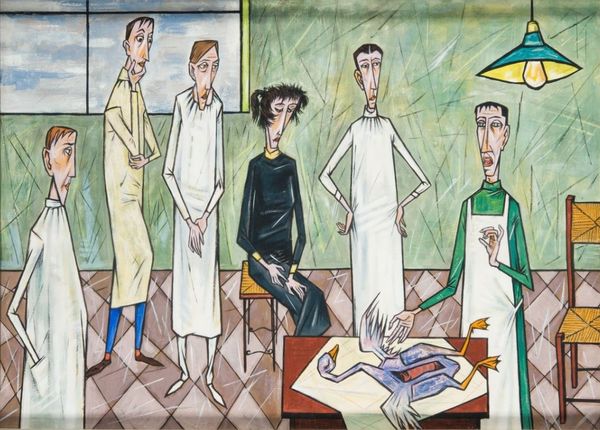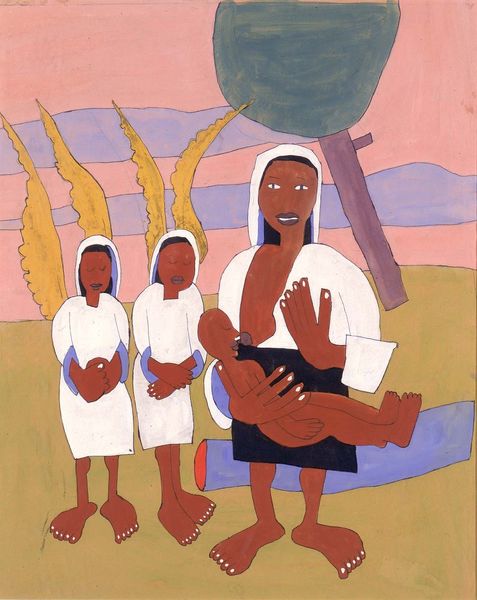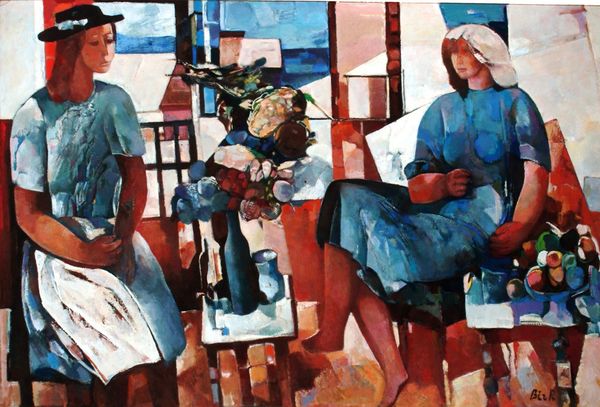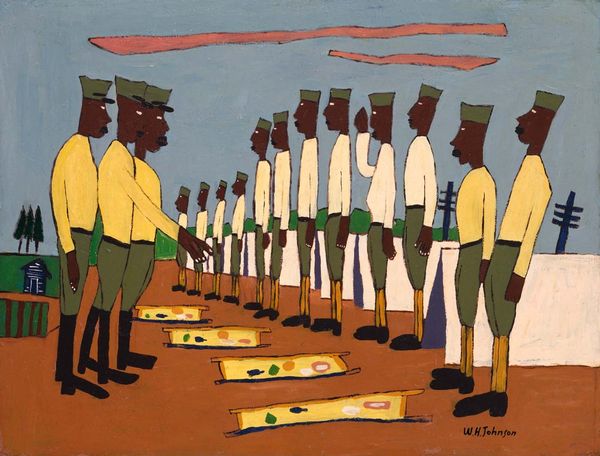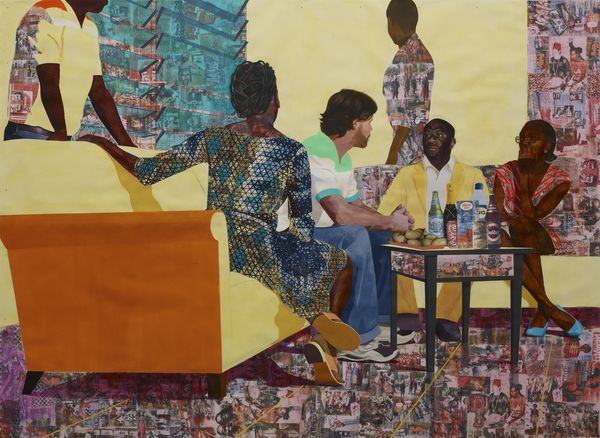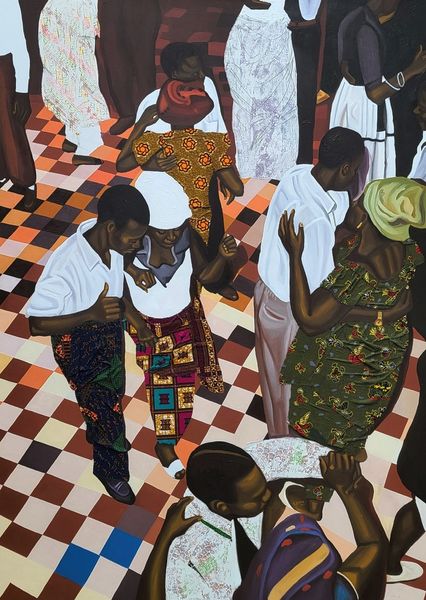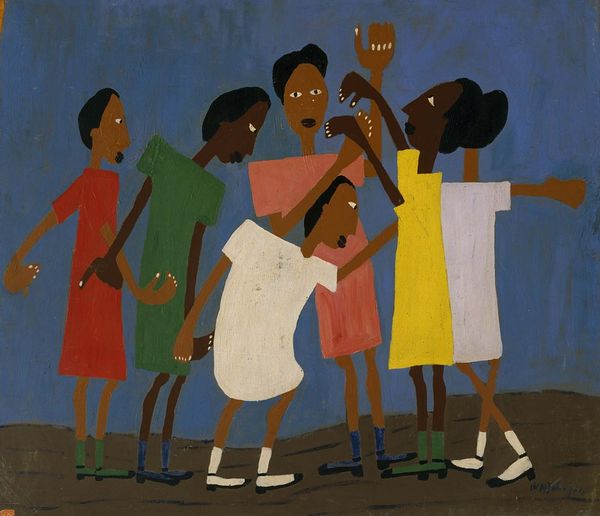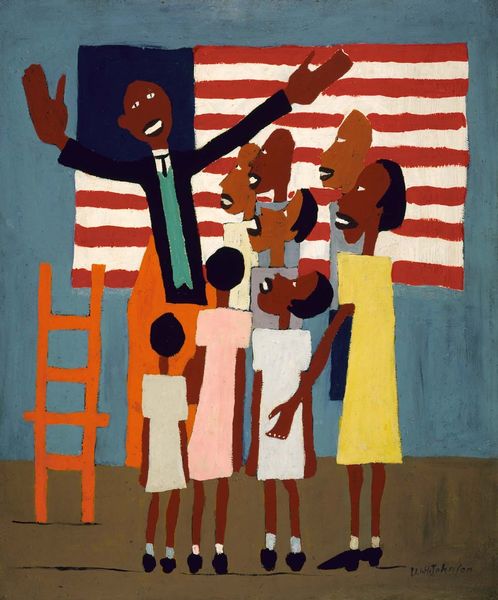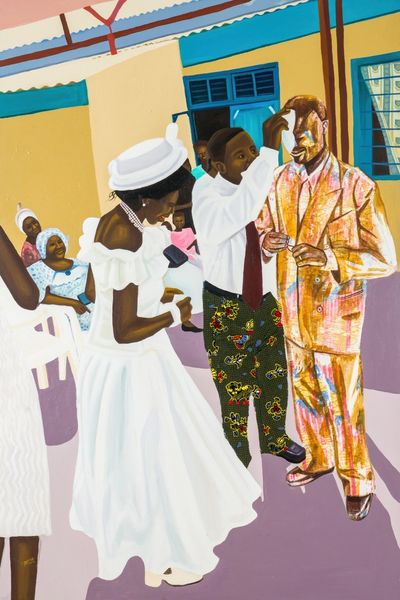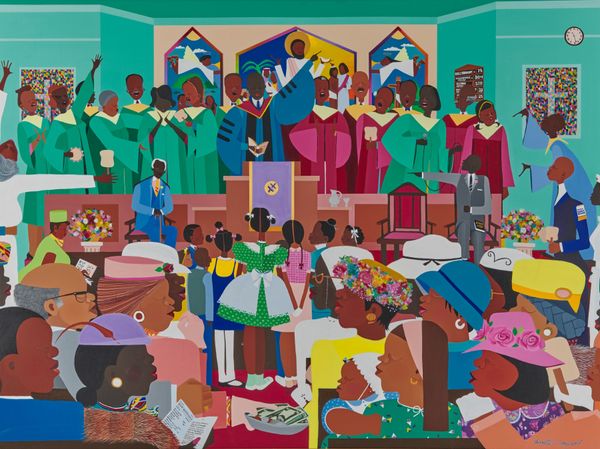
painting, watercolor
#
portrait
#
painting
#
harlem-renaissance
#
watercolor
#
naive art
#
genre-painting
#
watercolor
Copyright: William H. Johnson,Fair Use
Curator: William H. Johnson’s watercolor and tempera on paper, “Knitting Party,” created in 1942, offers an intimate glimpse into a wartime scene. The artist, associated with the Harlem Renaissance, captures four figures, presumably nurses, engaged in knitting. What are your first impressions? Editor: It's immediately striking! There’s something both earnest and melancholic in its simplicity. The flatness of the figures against the somewhat haphazardly rendered background evokes a sense of quiet purpose but also underlying anxiety. Curator: Let’s consider the materiality then. Johnson uses visible brushstrokes, and the color palette is restrained. The repeated use of pastel blue and the textured paper suggest a possible shortage of supplies during wartime and how readily available, commonplace materials were transformed by artistic labor. Editor: And the visual language, simple though it seems, is rich with symbolism. The American and Red Cross flags assert patriotism and service during a time of conflict, while the act of knitting itself – a traditional symbol of domesticity and care – takes on an urgent, practical significance. Notice how these visual cues serve to build up cultural and historical narratives, turning a common act into one weighted with meaning. Curator: Precisely. The subject matter directly engages with the social realities of its time. These women are actively participating in the war effort, knitting socks and other items for soldiers. The work underscores the significance of women’s often-unseen labor as integral to the success of wartime mobilization. Editor: Looking closely, there’s an almost iconic quality in the repeated shapes – the roundness of the caps, the simplicity of the faces. It lends an air of timelessness, as though these women are representative of something larger than just this one moment. Knitting and service; themes which still carry so much cultural meaning today. Curator: I concur, by examining the work through the lens of materiality and social context, we can gain a deeper appreciation for Johnson’s portrayal of shared purpose and his focus on the human costs of war. Editor: And by analyzing the symbolic meaning imbued in this unassuming scene, we understand how even everyday actions, like knitting, can echo profoundly throughout history and touch on our collective memory.
Comments
No comments
Be the first to comment and join the conversation on the ultimate creative platform.
